#samurai honda tadakatsu
Photo
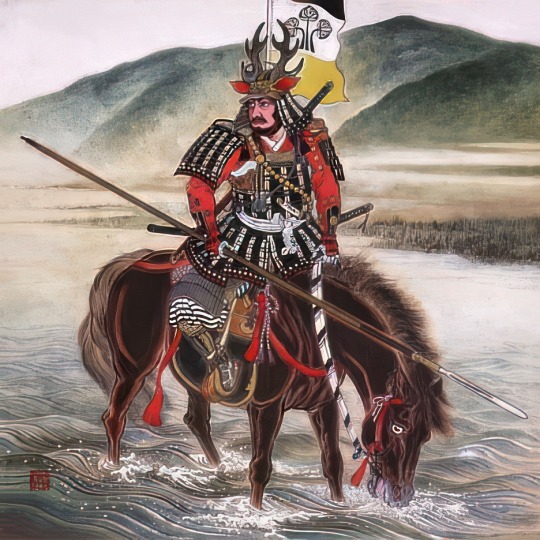
Honda Tadakatsu (本多 忠勝, March 17, 1548 – December 3, 1610)Was one of the Tokugawa Four Heavenly Kings. It is said that he fought 60 battles and was never injured once.Tadakatsu fought with the legendary spear Tombo-Giri.The Tonbokiri (蜻蛉切) is one of three legendary Japanese spears created by the famed swordsmith Fujiwara Masazane, said to be wielded by the daimyō Honda Tadakatsu, a leading general of Tokugawa Ieyasu.The spear derives its name from the myth that a dragonfly landed on its blade and was instantly cut in two. Thus tonbo (Japanese for "dragonfly") and kiri (Japanese for "cutting"), translating this spear's name as "Dragonfly Cutter".
60 notes
·
View notes
Text
Art Commission Open
Ko-Fi Commission Open
I just finished this Commission last week and I forgot to post it out... Thank you so much for Commissioning me☺️
Tadakatsu Honda Fanart from Samurai Warriors 5.
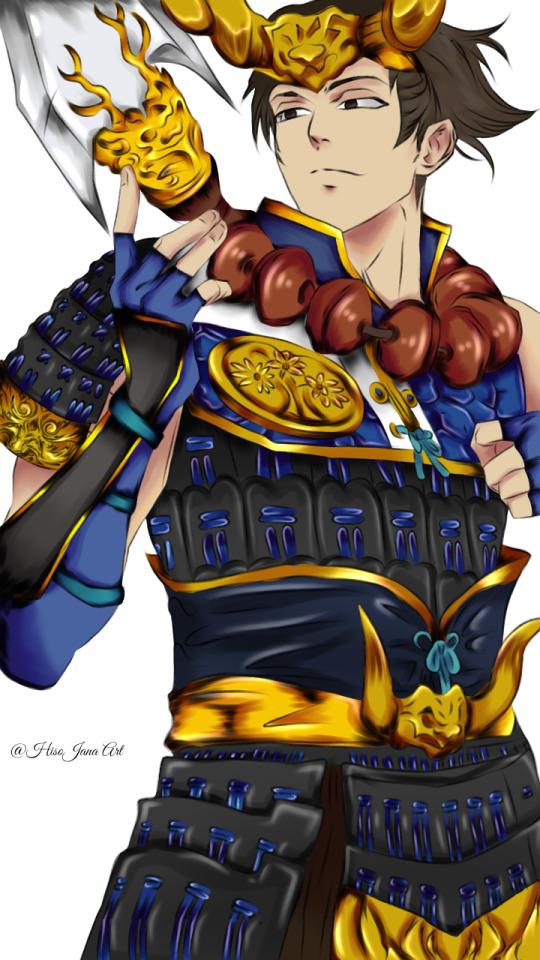
~DM me if you're Happen to be interested in an art Commission right now... Emergency Commission~
#Art Commission Open#Ko-Fi Commission Open#Reiketsunomizunomegami blog#Reiketsunomizunomegami art#Reiketsunomizunomegami#Fanart#Tadakatsu Honda Fanart#Tadakatsu Honda#My art#Samurai Warriors 5 art#Samurai Warriors 5#Emergency Commission
11 notes
·
View notes
Text
This idea's been in my queue for a while, and I finally did it. It's Monty as Tadakatsu Honda (本多忠勝) from Samurai Warriors 2.
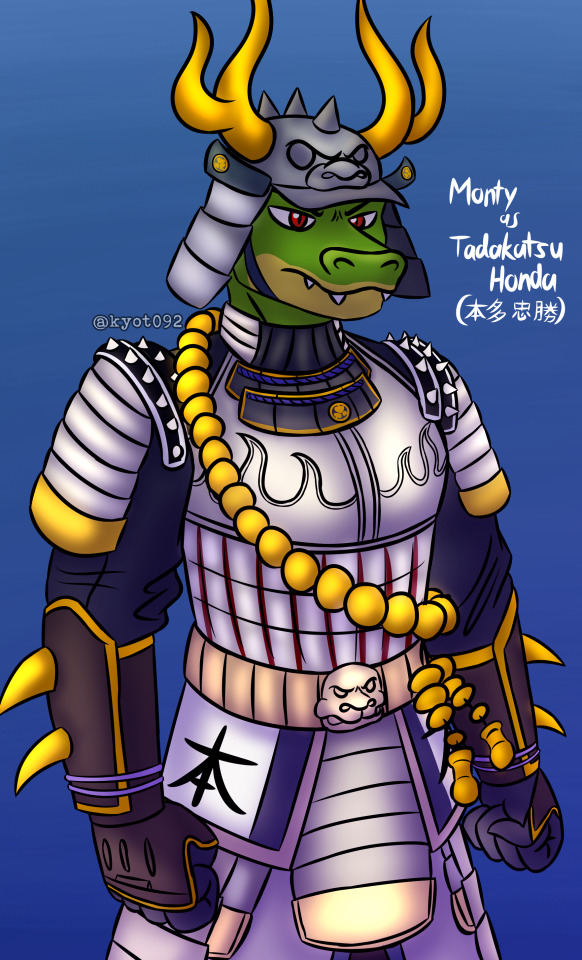
#fnaf#fnaf security breach#fnaf fanart#fnaf au#fnaf monty#fnaf montgomery gator#montgomery gator#honda tadakatsu#samurai warriors
28 notes
·
View notes
Text

Ieyasu and the boys
Gouache painting
#Gouache#Painting#Art#artists on tumblr#Samurai warriors#戦国無双#ieyasu tokugawa#hanzo hattori#honda tadakatsu#koei tecmo#traditional art
27 notes
·
View notes
Text
Ryu Number: The Sengoku Period/Romance of the Three Kingdoms characters of Warriors Orochi 4 Ultimate, Chapter 2, Part 1
The Rescue of Takeda
Kunoichi (くのいち) Female ninja invented by KOEI.
Takeda Shingen (武田 信玄) Major daimyo of the Sengoku Period. Led the Takeda clan. Born 1521. Highly skilled, he famously almost entirely annihilated the combined forces of the Tokugawa clan and the Oda clan at the Battle of Mikatagahara in 1573. Unfortunately, he was unable to fully defeat his foe and had to withdraw. In the later Siege of Noda Castle, he succeeded in taking the castle from Tokugawa forces, but was shot by a sniper, perhaps fatally. He died in the same year (1573).
Sanada Nobuyuki (真田 信之) Samurai. Born 1566. Older brother of Sanada Yukimura. Originally served the Takeda clan under his father. After the Takeda clan was destroyed, this and that happened, but Nobuyuki eventually fell in under Toyotomi Hideyoshi. When Ishida Mitsunari led his uprising at the 1600 Battle of Sekigahara, Nobuyuki, who was married to Tokugawa Ieyasu’s adopted daughter/Honda Tadakatsu’s daughter (that’s one person), served the Eastern Army under Tokugawa, while his Yukimura and his father served the other side. After the Eastern Army won, Nobuyuki was able to secure exile for Yukimura and his father (rather than anything capital). Died 1658.
Sanada Yukimura (真田 幸村; also called Sanada Nobushige/真田 信繁) Born 1567. Served the Takeda clan until their fall, after which he ended up under Toyotomi Hideyoshi. At the 1600 Battle of Sekigahara, joined the Western Army, but his life was spared at the request of his brother Nobuyuki and he was exiled instead of executed. However, at the Siege of Osaka he again joined Toyotomi loyalists against Tokugawa Ieyasu’s forces and was killed there in 1615.
Guan Yinping
Liu Bei
Ma Chao
Naoe Kanetsugu
Uesugi Kenshin
Hori Hidemasa (堀 秀政) Born 1553. Served Nobunaga, then, after Nobunaga’s death, Toyotomi Hideyoshi, one of Nobunaga’s retainers. Died 1590 of illness.
Kai (甲斐, often suffixed with -hime i.e. Lady) Date of birth unclear—possibly 1572. Originally served the Hōjō clan. In the 1590 Siege of Oshi, wherein Toyotomi Hideyoshi’s forces struck against the Hōjō clan, she defended the castle for over a month with an incredibly small number of men, only surrendering after it was learned that the lord of the castle (Kai’s father) had been defeated elsewhere. She later put down an internal rebellion by sword, impressing Hideyoshi such that he made her his concubine. I guess that was a reward back then. Date of death unknown—she disappears from history after the Siege of Osaka (1615ish), which saw the defeat of the Toyotomi by the Tokugawa shogunate.
Mori Ranmaru (森 蘭丸; also called Mori Naritoshi/森 成利) Attendant of Oda Nobunaga. Served Nobunaga with great devotion. Died in the Honnō-ji Incident.
Niwa Nagahide (丹羽 長秀) Retainer of Oda Nobunaga. Born 1535. Died of illness 1585.
Nō
Oda Nobunaga (織田 信長). Major daimyo of the Sengoku Period. Born 1534. The guy who kickstarted the unification of Japan. He did a dang lot and trying to sum it all up under one entry is more work than I’m up to right now, so suffice to say a lot of people died and it was very interesting and/or dramatic. He was known both for his innovative tactics and his brutal behavior toward the uncooperative. His also-famous retainers were Toyotomi Hideyoshi and Tokugawa Ieyasu. He died 1582 in the Honnō-ji Incident when his vassal Akechi Mitsuhide rebelled—after being wounded and made unable to fight further, he committed suicide (possibly; it was a big ruckus so exactly how he died is unclear).
Sakuma Nobumori (佐久間 信盛) Retainer of the Oda clan. Born 1528. Was entrusted with the care of Oda Nobunaga. Despite this, in 1580, he received a formal chastisement from Nobunaga for Not Being Good At His Job and was dismissed (de facto exiled), and would die in 1582. There are opinions regarding whether this dismissal was deserved.
Sassa Narimasa (佐々 成政) Samurai lord. Born 1536. Served Oda Nobunaga through the latter’s career. Eventually ended up serving Toyotomi Hideyoshi. For his services he was granted Higo Province, but after he was unable to quell an uprising there on his own he was ordered by Hideyoshi to commit suicide, which he did in 1588.
Akechi Hidemitsu (明智 秀満) Retainer to Akechi Mitsuhide, which isn’t confusing at all. Married to a daughter of Akechi Mitsuhide. Led the attack against Nobunaga at Honnō-ji. Famously cut across Lake Biwa with his horse after Akechi Mitsuhide’s defeat at the 1582 Battle of Yamazaki, then committed ritual suicide at Sakamoto Castle. Died 1582. The character Akechi Samanosuke in the Onimusha series is based on him, but probably not intended to be literally the same individual.
Akechi Mitsuhide (明智 光秀) Born 1528. Served Oda Nobunaga, but is best known for his assassination. In 1582, he was ordered by Nobunaga to assist Toyotomi Hideyoshi against the Mōri clan, but instead rebelled and attacked Nobunaga at Honnō-ji (translator’s note: “ji” means “temple”). The reasons for his actions are unclear at best. With less support and more enemies than he apparently anticipated, Mitsuhide was killed in 1582 fleeing (as did his forces) from the Battle of Yamazaki.
Saitō Toshimitsu (斎藤 利三; some sources give his given name as “Toshikazu”) Vassal of Akechi Mitsuhide. Born 1534. Sided with Mitsuhide in the Honnō-ji Incident. Captured and executed accordingly in 1582.
Asahina Yasutomo (朝比奈 泰朝) Vassal of the Imagawa clan. After Yoshimoto’s death, continued to serve his heir Imagawa Ujizane (Ujizane was actually the one who notably enjoyed playing kemari, not Yoshimoto).
Imagawa Yoshimoto
Okabe Motonobu (岡部 元信) Vassal of Imagawa Yoshimoto. Even after Yoshimoto was killed in the 1560 Battle of Okehazama, he refused to stop fighting, which apparently impressed Nobunaga such that he returned Yoshimoto’s head. Afterward, Motonobu served the Takeda clan and died in 1581 in the Seige of Takatenjin, falling to Tokugawa forces.
Fūma Kotarō (風魔 小太郎) The name taken on by each head of the Fūma clan, which specialized in guerrilla warfare and espionage. The fifth leader of the clan is the pertinent one here. Served the Hōjō clan. Forced to surrender with the Hōjō clan after the latter’s defeat at the 1590 Siege of Odawara at the hands of Toyotomi Hideyoshi. The Fūma clan were reduced to brigands, and Fūma Kotarō was eventually captured and executed by Tokugawa Shogunate forces in 1603. That said, it’s really not clear how much of this guy is actual history and how much is folklore, which is itself very ninja, so good job, I guess.
Hōjō Tsunashige (北条 綱成; given name possibly “Tsunanari”) Born 1515. Initially a vassal of the Imagawa clan, he joined the Hōjō clan and became the brother-in-law of Hōjō Ujiyasu (third head of the Hōjō clan). He managed to retire and died 1587.
Hōjō Ujinao (北条 氏直): Final head of the Hōjō clan. Born 1562. He tried to take advantage of the chaos after the Honnō-ji incident, but ended up defeated by Tokugawa Ieyasu and banished. Died 1591.
Hōjō Ujiyasu (北条 氏康) Head of the Hōjō clan. Born 1515. Conflicts began between the Hōjō clan and the Takeda clan toward the end of Ujiyasu’s life, but he was able to hammer out a truce between the Hōjō and Uesugi Kenshin and the Hōjō and Takeda Shingen. He died in 1571. His heir was Hōjō Ujimasa.
Hou Yin (侯 音, Kou On) Subordinate of Cao Cao. In 218, Cao Cao sent his younger second cousin Cao Ren to Wan (present day Nanyang, Henan) to prepare an attack on Guan Yu. However, Cao Ren’s policy of conscription and forced labor led to an uprising led by Hou Yin. Cao Ren put down the rebellion and Hou Yin was killed in 219.
Hu Juer (胡 車兒, 胡 車児, Ko Shaji, often translated Hu Che'er or Huche’er, the latter used by Warriors Orochi 4) Aide of minor warlord Zhang Xiu. In Romance of Three Kingdoms, when Zhang Xiu strikes against Cao Cao, Cao Cao’s guard Dian Wei is a really tricky piece to get around. Hu Juer is the one who comes up with a plan that gets Dian Wei drunk so that he can steal his weapons; this leads to Dian Wei’s death in the ensuing battle. Not to be confused with unrelated Three Kingdoms individual Hu Che’er (胡 赤兒), who served and betrayed Niu Fu (who served Dong Zhuo).
Jia Xu (賈 詡, Ka Ku). Born 147. Originally served Dong Zhuo and advised in the takeover of the imperial capital after Dong Zhuo’s death. He eventually left and served minor warlord Zhang Xiu as advisor instead; after Zhang Xiu surrendered to Cao Cao he became one of Cao Cao’s strategists. Made major contributions in this way, and helped secure Cao Pi as Cao Cao’s heir. Died 223.
Zhang Quan (張 泉, Chou Sen; also translated Zhang Chuan) In 219, when Cao Cao was away from the capital on a campaign against Liu Bei, a government official of Cao Wei, Wei Feng, plotted a rebellion, but one of the conspirators got cold feet and reported the plan to Cao Pi, Cao Cao’s heir. Zhang Quan was one of the people who was implicated and executed.
Zhang Xiu (張 繡, 張 繍, Chou Shuu) Initially a minor warlord who stood against Cao Cao. His uncle, Zhang Ji, served Dong Zhuo, and he was part of the coup after Dong Zhuo’s death that took over the imperial capital. He was angered when Cao Cao took Zhang Ji’s widow as concubine. The war between Zhang Xiu and Cao Cao ended in 200 when Zhang Xiu listened to his advisor Jia Xu and surrendered, after which he served Cao Cao with distinction—go fig. Father of Zhang Quan. Died 207 en route to join Cao Cao in his northern campaign against Wuhuan tribes.
Zhao Yan (趙 儼, Chou Gen) Born 171. Joined Cao Cao after he “took in” Emperor Xian. Known for his strictness in enforcing law. Continued to serve under Cao Pi, Cao Rui, and Cao Feng. Died 245.
The Rescue of Uesugi
Aya[-Gozen] (綾 [御前]; translator’s note: “-Gozen” means “Lord”): Born 1524. Half-sister of Uesugi Kenshin, mother of Uesugi Kagekatsu through Nagao Masakage. Died 1609.
Naoe Kanetsugu
Uesugi Kagekatsu (上杉 景勝): Born 1556. Uesugi Kenshin’s nephew through Kenshin’s sister Aya. After his father died, Kenshin adopted him. When Kenshin died in 1578, the inheritance was supposed to go to Kenshin’s other adopted son, Uesugi Kagetora, but Kagekatsu defeated him and took it for himself. He later married a daughter of Takeda Shingen. Kagekatsu was defeated by Oda Nobunaga’s forces, but Nobunaga’s death granted him an unexpected reprieve, and Kagekatsu stayed alive to fight another day. Kagekatsu was one of the Council of Five Elders Toyotomi Hideyoshi set up to ensure that his chosen heir, Hideyori, succeed him; when the Sekigahara Campaign occurred between Ishida Mitsunari’s Western Army and Tokugawa Ieyasu’s Eastern Army, Kagekatsu sided with Mitsunari, but was defeated early and went to serving Tokugawa. Died 1623.
Yukimura Sanada
Nagamasa Asano (浅野 長政): Born 1546. Served Oda Nobunaga and Toyotomi Hideyoshi. Under Hideyoshi, held seniority over the Five Commissioners, who governed Kyoto and surrounding areas. Assisted in Hideyoshi’s failed invasions of Korea. Died 1611.
Hachisuka Koroku
Hosokawa Fujitaka (細川 藤孝): Born 1534. Originally a retainer of the last Ashikaga shogun, Ashikaga Yoshiaki, but when Nobunaga and Yoshiaki clashed, he joined Nobunaga. Refused to support Akechi Mitsuhide after Mitsuhide killed Nobunaga, even though his son was married to Mitsuhide’s daughter. He shaved his head and became a Buddhist monk, taking on the name “Yūsai” (幽斎) and handing his responsibilities to his son. During the Sekigahara Campaign, in 1600, he was in command of Tanabe Castle when it came under siege by Western Army forces (his son was away as part of Tokugawa Ieyasu’s Eastern Army); it’s said that the Western Army attackers, having great respect for Fujitaka, staged an ineffective attack. Died 1610.
Kani Saizō (可児 吉長, also called Kani Yoshinaga/可児 吉長): Born 1554. Skilled with the spear. Served various vassals of Oda Nobunaga. Also served Oda Nobutaka, but after Nobutaka fought against Toyotomi Hideyoshi and then committed suicide, he served the nephew and retained of Hideyoshi, Toyotomi Hidetsugu, but eventually left after Hidetsugu saw defeat at the 1584 Battle of Komaki and Nagakute (part of a power struggle between Hideyoshi and Oda Nobukatsu, with Tokugawa Ieyasu supporting Nobukatsu) and became a masterless samurai (i.e. ronin). Fought in the Battle of Sekigahara in the Eastern Army under Fukushima Masanori. A devotee of the kami Atago Gongen, he is said to have foreseen that he would die on the day of Atago Gongen’s festival, and did so in 1613.
Kuki Yoshitaka
Kuwayama Shigeharu (桑山 重晴): Born 1524. Served Niwa Nagahide, vassal of Oda Nobunaga. Joined Tokugawa Ieyasu’s Eastern Army in the Battle of Sekigahara. Died 1606.
Oda Nobukatsu (織田 信雄, forename possibly “Nobuo”): Born 1558. Second son of Oda Nobunaga. Became an adopted heir of the Kitabatake clan and ensured his position as head with violence. Was unsuccessful and incompetent as a general, but a skilled fighter. After Nobunaga’s death, he and his brother Nobutaka quarreled over succession, leading a council to decide on the infant Oda Hidenobu instead. Toyotomi Hideyoshi supported him, and he initially joined with Hideyoshi to fight Nobutaka, but eventually a power struggle occurred between Nobukatsu and Hideyoshi, too, and he allied with Tokugawa Ieyasu’s force to fight against Hideyoshi in the 1584 Battle of Komaki and Nagakute. Became the guardian of Hideyoshi’s son and successor, Toyotomi Hideyori, in 1598, but walked out on him directly before the 1614 Siege of Osaka, cooperating with Ieyasu. Lived the rest of his life comfortably and died 1630.
Oda Nobutaka (織田 信孝, forename possibly “Nobunori”): Born 1558. Third son of Oda Nobunaga. Was adopted into the Kanbe clan and became its eighth head. After Nobunaga’s death, he quarreled over succession with his brother Nobukatsu. Tensions between Nobutaka and Nobukatsu eventually came to violence when Nobutaka tried to start a war against Toyotomi Hideyoshi (who supported Nobukatsu). He lost and was forced to commit suicide in 1583.
Yamauchi Kazutoyo (山内 一豊, forename possibly “Katsutoyo”): Born 1545 or 1546. Served Oda Nobunaga, then Toyotomi Hideyoshi. In the Battle of Sekigahara, served Tokugawa Ieyasu’s Eastern Army. Died 1605.
Li Fei (黎 斐, Rei Hi) Served Wu under the regent Sun Chen (“under” Sun Liang). Some background: In 249, Sima Yi, regent of young Cao Wei emperor Cao Fang, overthrew his fellow co-regent Cao Shuang in a coup (referred to as the Incident at the Gaoping Tombs). After this, Cao Wei’s power began to fall into the hands of the Sima family. Sima Yi was followed by his son Sima Shi (who deposed Cao Fang in 254 and replaced him with Cao Mao), who was followed by another fon of Sima Yi’s, Sima Zhao. Various rebellions occurred against the Simas, but it always ended badly for the rebels and loyalists, which made Cao Wei general Zhuge Dan real antsy until his staged his own rebellion against Sima Zhao in 257. Anyway, Sun Chen of Wu supported Zhuge Dan’s rebellion (but really messed it up in various ways), and Li Fei led some of the Wu forces.
Lü Ju (呂 據, 呂 拠, Ryo Kyo): Served Sun Quan of Wu. Lü Ju was one of the men Sun Quan placed to guide his heir, Sun Liang, after Sun Quan’s death (Zhuge Ke, meanwhile, was regent). You might remember that Sun Jun killed Zhuge Ke and assumed regency. In 256, Sun Jun ordered Lü Ju and other generals to attack the Xu and Qing provinces under Wei. However, shortly after the army started out, Sun Jun took ill and died, and his duties were taken over by his cousin, Sun Chen. Apparently, this distressed Lü Ju, who suggested with some other folks that Sun Chen be removed from power. Sun Chen objected, hilarity ensued, and Lü Ju ended up committing suicide. And then Sun Chen killed his whole family. Great going.
Sun Quan
Sun Shao
Taishi Ci (太史 慈, Taishi Ji): Born 166. Han official who ended up serving Wu. Originally a minor official of the Donglai Commandery. Rescued minor warlord Kong Rong, the Chancellor of Beihei State, from Yellow Turban rebels, to repay the aid his mother had received from Kong Rong in the past. Tried to establish his own power base but was defeated by Sun Ce’s forces. He then willingly served Sun Ce. After Sun Ce was assassinated, he served his successor, Sun Quan. Died in 206. In Romance of the Three Kingdoms, he gets a more dramatic end, dying in the 208 Battle of Hefei (this occurred between Sun Quan and Cao Cao as part of the Red Cliffs Campaign).
Taishi Xiang (太史 享, Taishi Kyou) Served Wu. Son of Taishi Ci. Served Sun Quan; was appointed to various posts. In fiction, Sun Quan looks after him after the death of his father.
Li Tong (李 通, Li Tsuu): Born 168. Served Cao Cao of Wei. Saved Cao Cao’s rearguard in the retreat from Zhang Xiu in 197. Broke through Guan Yu’s defenses in the 208 Battle of Jiangling and supported Cao Ren, but died of illness during the campaign in 209.
Xu Huang (徐 晃, Jo Kou): Served Cao Cao of Wei. One of the individuals responsible for secreting Emperor Xian out of Li Jue and Guo Si’s control. During this time, he still served Yang Feng, a former bandit who served as a general under the Han government. His most successful moment was when he led a force to break Guan Yu’s siege of Fancheng in 219 (this was the start of the circumstances directly leading to Guan Yu’s capture and death by Sun Quan—at this point Cao Cao and Sun Quan were allied). He would later serve under Cao Pi and Cao Rui before dying in 227. In Romance of the Three Kingdoms, he’s killed during the Xincheng Rebellion by Meng Da (a rebelling Wei general).
Xu Shang (徐 商, Jo Shou): Served Cao Cao of Wei. At the 219 Battle of Fancheng, he supported Xu Huang against Guan Yu.
Yin Shu (殷 署, In Sho): Served Cao Cao of Wei. In 215, after the troops of Han Sui (a warlord who had rebelled against Cao Cao) were placed under his authority, they rebelled against Yin Shu, but Yin Shu survived. At the 219 Battle of Fancheng, supported Xu Huang.
Zhai Yuan (翟 元, Teki Gen): A fictional character in Romance of the Three Kingdoms. Serves Cao Ren at the Battle of Fancheng and is killed by Guan Yu’s son, Guan Ping.
Zhu Gai (朱 蓋, Shu Gai): Served Cao Cao of Wei. At the 219 Battle of Fancheng, supported Xu Huang.
The Collapse of Oda’s Allied Forces
Ii Naomasa
Ii Naotora
Kunoichi
Takeda Shingen
Uesugi Kagekatsu
Asahina Nobuoki
Asahina Yasutomo
Imagawa Yoshimoto
Okabe Motonobu
Saika Magoichi (鈴木 孫一): A name inherited by the leader of one of the Saika Ikki (translator’s note: “Ikki” means “uprising” or “revolt”) groups. The Saika Ikki was one of a number of Ikkō-ikki sects (translator’s note: Ikkō was a small, militant offshoot of Jōdo Shinshū Buddism) (translator’s note: Jōdo Shinshū is a school of Jōdo Buddhism) (translator’s note: Jōdo Buddhism is a broad branch of Mahayana Buddhism focused on achieving rebirth in the Pure Land) made up of various peasants and merchants and the like. They were backed up by, uh, those particular Buddhists I mentioned parenthetically up there, and opposed daimyo rule. The relevant Saika Magoichi here was Suzuki Shigehide (鈴木 重秀). He famously fought against Oda Nobunaga in support of various opposed parties until those opposed parties—and the support they provided—petered out.
[Hosokawa] Gracia ([細川] ガラシャ; that katakana spells “Garasha”): Born 1563. Daughter of Akechi Mitsuhide. “Gracia” was her baptismal name after she converted to Christianity; her original name was “Tama” or “Tamako.” Married Hosokawa Tadaoki, son of Hosokawa Fujitaka. After her father betrayed and killed Oda Nobunaga, she was confined, but like in a “kept to mansion grounds” kind of way. Secretly converted to Catholicism even after Toyotomi Hideyoshi issued a proclamation against Christianity. When conflict broke out between Tokugawa Ieyasu and Ishida Mitsunari after Hideyoshi’s death, Mitsunari attempted to take Gracia hostage as part of a general plan to secure compliance of enemy generals, but everyone at the place went for suicide instead (except for Gracia—because Catholicism—who was killed by her retainer). This further did-not-endear Mitsunari to potential allies, possibly sealing his fate.
Jia Xu
Taishi Ci
Zhu Ran
Diaochan (貂蟬, Chousen): In real life, official Wang Yun organized a coup against Dong Zhuo with Lü Bu; one of the reasons Lü Bu and Dong Zhuo had fallen out was a quarrel over a woman in Dong Zhuo’s harem. Romance of the Three Kingdoms jazzes up the whole situation, inventing Diaochan, adopted daughter of Wang Yun. In fiction, Wang Yun and Diaochan set Dong Zhuo up, setting him and Lü Bu as the far sides of a love triangle with Diaochan in the middle, deliberately stirring up Bad Feelings between the two of them until Lü Bu is Very Inclined toward Wang Yun’s coup plans. As she’s a fictional character, her ultimate fate differs from folktale to folktale.
Dong Zhuo
Ju Shou (沮 授, So Ju; occasionally in Japanese as “Sho Ju”): Advisor under warlord Yuan Shao. Known for giving Yuan Shao good advice which Yuan Shao then ignored. Examples: Advised Yuan Shao to take in Emperor Xian and utilize his authority—he didn’t, and then Cao Cao did that instead, which was good for Cao Cao. Advised Yuan Shao that an all-out attack against Cao Cao was a Bad Idea and he ought to adopt a strategy of wearing him out over time—Yuan Shao did it anyway, and lost the 200 Battle of Guandu. Ju Shou was captured by Cao Cao in this battle and Cao Cao treated him decently, but remained thoroughly loyal to Yuan Shao and was killed by Cao Cao’s men when he tried to escape.
Wen Chou (文 醜, Bun Shuu): Served under Yuan Shao. At the 200 Battle of Yan Ford between the forces of Yuan Shao and Cao Cao, he was killed, possibly by Guan Yu (who was serving Cao Cao at that time).
Yan Liang (颜 良, 顏 良, 顔 良, Gan Ryou): Served under Yuan Shao. At the 200 Battle of Boma between the forces of Yuan Shao and Cao Cao, he was killed by Guan Yu (who was serving Cao Cao at that time).
Yuan Shao (袁 绍, 袁 紹, En Shou): During the civil wars at the end of the Han Dynasty, he controlled the northern territories of China. Spearheaded a coalition of warlords against Dong Zhuo when Zhuo was essentially holding Emperor Xian hostage, but it turns out warlords don’t coalite very well. Campaigned against Cao Cao, but lost battle after battle and died in 202 before he could properly set up succession, leaving his territories contested among his sons, which didn’t help them not also get defeated by Cao Cao. Cao Cao respected him and reportedly wept at his tomb.
Yuan Xi (袁 煕, En Ki): Second son of Yuan Shao. Following the 200 Battle of Guandu and the defeat of Yuan Shao’s forces by Cao Cao’s he fled to the Liaodong Peninsula, taking shelter with its administrator, Gongsun Kang. Kang’s domain was semi-independent, but he decided to curry favor with Cao Cao anyway, executing Yuan Xi in 207 and sending Cao Cao his head. He was married to Lady Zhen, who Cao Pi took as his own wife while Yuan Xi was still alive.
Lü Bu
Chaos Incarnate
Kunoichi
Sanada Yukimura
Takeda Shingen
Gracia
Fūma Kotarō
Haga Ujitsugu (垪和 氏続): Vassal of the Hōjō clan. When Takeda Shingen broke the alliance between the Takeda and Hōjō clans in 1568, he valiantly defended Kōkokuji Castle. He participated in the 1582 Battle of Kanagawa between Hōjō and Oda forces following the death of Oda Nobunaga, but his actions after are unclear at best.
Haga Yasutada (垪和 康忠): Vassal of the Hōjō clan. Helped hammer out the alliance between the Takeda, Hōjō, and Imagawa clans. His movement after the fall of the Hōjō clan are unknown.
Hōjō Tsunashige
Inomata Kuninori (猪俣 邦憲): Vassal of the Hōjō clan. After Toyotomi Hideyoshi issued an order forbidding private warfare among the daimyo, he was directly involved in the taking of Nagurumi Castle (which belonged to the Sanada clan). This led to Hideyoshi’s destruction of the Hōjō clan. What happened to Kuninori afterward is unclear.
Ishimaki Yasumasa (石巻 康敬): Born 1534. Vassal of the Hōjō clan. After the fall of the Hōjō clan, he eventually ended up with Tokigawa Ieyasu. Died 1613.
Kai
Kasahara Masaharu (笠原 政晴; Warriors Orochi 4 calls him Kasahara Masataka/笠原 政尭, which is apparently a historical error that’s percolated?): Vassal of the Hōjō clan. After the alliance broke between the Hōjō and Takeda clans, he defected to the Takeda in 1581 and even fought against his own family, but after the Takeda were defeated he returned to the Hōjō. During Toyotomi Hideyoshi’s Siege of Odawara in 1590, he was caught attempting to surrender by his brother and killed accordingly.
Lady Hayakawa (早川 殿; that last kanji is the honorific suffix “-dono”): One of the daughters of Hōjō Ujiyasu. As part of the alliance between the Takeda, Hōjō, and Imagawa clans, she married Imagawa Ujizane, Imagawa Yoshimoto’s son. After the alliance fell apart, the two of them ended up with Tokugawa Ieyasu. Died 1613.
Nagao Akinaga (長尾 顕長): Became head of the Nagao clan. His territory was caught between the Uesugi and Hōjō, but he eventually ended up solidly on the Hōjō side. Around 1589, he fell out with the Hōjō chan, though, and lost his territory. He defended Odawara Castle in 1590. Afterward, he became a wanderer and died in 1621.
Narita Nagatada (成田 長忠; also called Yasuchika/泰親): After the defeat of the Hōjō by Toyotomi Hideyoshi, he and his brother, Narita Ujinaga, were entrusted to one of Hideyoshi’s men, Gamō Ujisato. With his brother, assisted in the Kunohe rebellion, in which the forces of Hideyoshi and Tokugawa Ieyasu completed the unification of Japan through the killing of folks who didn’t particularly want to be unified. When Ujinaga died, he took over his stuff. He was in the Eastern Army in the 1600 Battle of Sekigahara. Died 1617.
Narita Ujinaga (成田 氏長): Father of Kai; older brother of Narita Nagatada. Born 1542. Originally a vassal of Uesugi Kenshin, he was later aligned with the Hōjō clan. After the defeat of the Hōjō by Toyotomi Hideyoshi, he and his daughter were placed in the care of one of Hideyoshi’s men, but Ujinaga eventually got into Hideyoshi’s graces (the relationship between Hideyoshi and Kai probably helped). Died 1596.
Ogasawara Yasuhiro (小笠原 康広): Born 1531. Vassal of the Hōjō clan. After Toyotomi Hideyoshi defeated Hōjō Ujinao in 1590, he followed the latter to exile until Ujinao’s death. Afterward, he served Tokugawa Ieyasu. Died 1598.
Tominaga Naokatsu (富永 直勝): Born 1509. Vassal of the Hōjō clan. In the Second Battle of Kōnodai in 1564 against the Satomi clan, he crossed the Edo River well ahead of the main body of the army and was killed. It’s said that he did this out of guilt for not being able to catch the defection of Ōta Yasusuke to Uesugi Kenshin. Ironically, this meaningful gesture served only to muck up Hōjō Tsunashige’s battle plans, though Tsunashige did manage to work out a victory anyway.
Ueda Norisada (上田 憲定): Born 1546. Vassal of the Hōjō clan. He was present at the Siege of Odawara in 1590 when Odawara Castle fell to Toyotomi Hideyoshi. What happened to him following those events is unclear, but he’s reported to have died 1597.
Fa Zheng
Guan Yinping
Xiahou Ba (夏侯 霸, 夏侯 覇, Kakou Ha): Son of Xiahou Yuan, a prominent general under Cao Cao. After Yuan was killed in the 219 Battle of Mount Dingjun at the hands of a Shu general, Ba swore revenge. He continued to serve the Cao Wei; however, in 249, the Incident at the Gaoping Tombs occurred wherein regent Sima Yi had the other regent Cao Shuang executed and effectively seized Cao Wei for himself. This was pretty bad for those who might have been politically aligned with Cao Shuang, and Xiahou Ba elected to defect to Shu. There, he befriended another defector from Cao Wei to Shu, Jiang Wei, and joined him on campaigns against Cao Wei. His date of death is unknown, but occurred between 255 and 259. In Romance of the Three Kingdoms, he is killed in the final invasion of Shu by Cao Wei forces (in 263) that marked the end of the Shu state.
Xu Huang
Yuan Shao
Lü Lingqi
The Rescue of Liu Bei
Sanada Yukimura
Noatora Ii
Uesugi Kenshin
Lady Hayakawa
Akechi Mitsuhide
Dom Justo Takayama (indicated in-game as Takayama Shigetomo/高山 重友 and also known as Takayama Ukon/高山 右近): Born c. 1552/1553; in 1564 his father converted to Roman Catholicism and he was baptized “Justo.” Served under Oda Nobunaga and Toyotomi Hideyoshi during the Sengoku period. Relating to his Christianity, his position allowed him and his father to facilitate the conversion of subjects and detroy Buddhist and Shinto shrines in their territories. When Hideyoshi ordered the expulsion of Christian missionaries and that Christian daimyo renounce their faith, Justo refused gave up his lands and possessions instead, living under the care of previous comrades, effectively in exile. When Tokugawa Ieyasu expelled Christians in 1614, he left for Manila (the Philippines then being Spanish territory), but died there in 1615; afterward, his family was allowed to return to Japan.
Gracia
Hori Hidemasa
Hosokawa Fujitaka
Mori Ranmaru
Nō
Oda Nobunaga
Sakuma Nobumori
Sakuma Yasumasa (佐久間 安政): Born 1555. Served Oda Nobunaga. Worked under Sakuma Nobumori for some time. During the succession dispute following Oda Nobunaga’s death, Yasumasa fought in the 1583 Battle of Shizugatake on the side of Shibata Katsuie and Oda Nobutaka against Toyotomi Hideyoshi and Oda Nobukatsu. He took shelter among various sides opposing Hideyoshi in the following years, but Hideyoshi pardoned him after 1590 and he eventually became his vassal. Fought in the Eastern Army in the 1600 Battle of Sekigahara. Died 1627.
Sassa Narimasa
Shibata Katsuie (柴田 勝家): Born 1522, or maybe 1526 or 1527. Trusted general of Oda Nobunaga. He originally served under Nobunaga’s younger brother, Oda Nobuyuki, and fought for Nobuyuki when he and Nobunaga clashed over control of the Oda clan; Nobuyuki lost and was executed, but was impressed with Katsuie, who pledged himself to Nobunaga. After Nobunaga’s death and the following succession crisis, Katsuie eventually sided with Nobunaga’s third son, Oda Nobutaka, against Toyotomi Hideyoshi and Oda Nobukatsu. When he was defeated in the 1582 Battle of Shizugatake, he retreated to Kitanosho Castle, where he and his wife, Oichi (the younger sister of Nobunaga) committed suicide.
Shibata Katsumasa (柴田 勝政): Born 1557. He was Shibata Katsuie’s nephew through his mother, as well as Katsuie’s adopted son. All indications are that he died at the 1582 Battle of Shizugatake, but there is a legend that he survived, changed his name to Shibano, and died in 1641 in the town of Sadamitsu (merged into the town of Tsurugi since 2005).
Yamauchi Kazutoyo
Guan Ping (關 平, 関 平, Kan Pei): Eldest son of Guan Yu who served under Liu Bei (in Romance of the Three Kingdoms, he’s the son of a farmer who impresses Guan Yu, who subsequently fosters him). After Sun Quan’s Wu forces, led by Lü Meng, invaded Liu Bei’s Jing Province, he and his father were captured and executed in 220.
Fa Zheng
Liu Bei
Ma Chao
Xu Shu (徐 庶, Jo Sho): Originally a vigilante who gave up the sword and became a reclusive scholar in Wei. Settled in Shu’s Jing Province in the early 190s. Became an advisor to Liu Bei; also recommended Zhuge Liang to Liu Bei as an advisor. He joined Liu Bei, but after Cao Cao’s forces defeated Liu Bei’s at the 208 Battle of Changban and Xu Shu’s mother was among those captured, he left to serve Cao Cao He lived through Cao Pi’s reign and died in the 230s during the reign of Cao Rui. Romance of the Three Kingdoms dramatizes Xu Shu’s circumstances: Cao Cao wants to poach Xu Shu, so he captures Xu Shu’s mother and orders her to write Xu Shu to join her. She refuses, so he has his advisor Cheng Yu hang around Xu Shu’s mother until he’s good enough to mimic her handwriting and write Xu Shu himself. Xu Shu falls for it, and Xu Shu’s mother commits suicide out of shame. Xu Shu remains with Cao Cao, but refuses to ever give Cao Cao any advice.
Zhang Fei (張 飛, Chou Hi): Follower of Liu Bei basically from the beginning (in The Romance of the Three Kingdoms, he’s one of Liu Bei’s sworn brothers along with Guan Yu). He was a skilled military leader, though fiction makes him a mite unintelligent. After Sun Quan broke his alliance with Liu Bei in 219 (invading Jing Province, which resulted in Guan Yu’s death), Liu Bei launched a campaign to strike back; Zhang Fei was sent to lead troops, but two of his subordinates assassinated him and took his head as they defected to Sun Quan’s side.
Lianshi
Chen Tai (陳 泰, Chin Tai): Military general of Wei. In 260, Cao Mao died in a futile attempt to take his imperial power back from the “regent” Sima Zhao. Chen Tai wept and initially refused to attend coirt sessions. During the attempted ousting, Cao Mao had died by spear personally at the hands of officer Cheng Ji, but with Cheng Ji following the instructions of Sima Zhao’s aide Jia Chong; Chen Tai recommended that Jia Chong executed for regicide accordingly, but Sima Zhao executed Cheng Ji instead. Chen Tai died soon afterward, in some recountings of the event of suicide or despair.
Guo Huai (郭 淮, Kaku Wai): Military general of Wei. Initially served under Xiahou Yuan and Zhang He during Cao Cao’s reign. Additionally, lived during the reigns of Cao Pi, Cao Rui, Cao Fang, and Cao Mao. Failed to participate in the initial campaign of Liu Bei to take Hanzhong Commandery from Cao Cao due to illness. Notably fell sick and was consequentially late to Cao Pi’s coronation, which led Cao Pi to not-threaten him with execution, which Guo Huai fended off with a clever response that got him promoted. Studied potential enemies/vassal beforehand to win them over diplomatically. A major figure when it came to fighting the Shu and resisting their invasions. In 251, when Wei general Wang Ling launched a failed rebellion, it was ordered that all relatives of Ling be executed; this included Guo Huai’s wife. Guo Huai reluctantly refused to request his wife’s pardon, and only begged the Wei regent Sima Yi after he was moved by the pleas of his sons (she was spared). Died 255; in Romance of the Three Kingdoms, he’s killed by an arrow of Jiang Wei’s during Shu’s (unsuccessful) 253 invasion.
Sima Zhao (司馬 昭, Shiba Shou): Born 211. Regent of Wei emperors Cao Mao and Cao Huan. I mean, I say “regent,” but he held all the power. His father, Sima Yi, and his brother, Sima Shi, were similarly “regents” for Mao’s predecessor Cao Fang, with Sima Yi having fully turned regency into “regency” during Cao Fang’s “reign.” Sima Zhao took over for “regenting” for Cao Mao after the previous “regent” Sima Shi died in 255. In 262, Cao Mao attempted to regain his power in a rebellion and was killed; Sima Zhao subsequently had Cao Huan, Cao Mao’s first cousin once removed, become puppet emperor instead. In 262, he launched an invasion of Shu, which was by this time weakened by having carried out numerous failed campaigns against Wei; this invasion ended in the surrender of Shu emperor Liu Shan and the fall of the Shu state. He died in 265, all but having named himself emperor; his son, Sima Yan, would finally formally usurp Cao Huan and establish the state of Jin (retroactively formalizing Sima Zhao an emperor).
Wang Yuanji (王 元姬, 王 元姫, Ou Genki): Born 217. Noble and wife of Sima Zhao. When her son Sima Yan forced Wei emperor Cao Huan to abdicate and proclaimed himself emperor of Jin, she formally became empress dowager; however, she continued to live a simple and frugal lifestyle. Died 268.
Xiahou Ba
Xiahou Xuan (夏侯 玄, Kakou Gen): Born 209. He was related to Xiahou Ba but refused to follow him to Shu after Sima Yi staged his coup and seized power as a “regent.” Having been aligned with Sima Yi’s political opponents, he wasn’t treated all that well. Around 254, Li Feng, who held a position in the Wei government, sought to overthrow Sima Shi (who had followed Sima Yi) and put the power in the emperor Cao Fang’s hands. Xiahou Xuan was part of this plot; however, Sima Shi found out before it could be enacted and Xiahou Xuan was executed.
Xin Chang (辛 敞, Shin Shou): An official of Wei, and a subordinate of Cao Shuang. When regent Sima Yi made his move against other-regent Cao Shuang in 249, taking the capital, Xin Chang asked his older sister, Xin Xianying, for advice, and she told him that as one of his Cao Shuang’s men, he was obligated to go to Cao Shuang’s aid. Following the whole shebang, Xin Chang was pardoned from execution, having been recognized as only following his duty.
Zhuge Dan (諸葛 誕, Shokatsu Tan): Military general of Wei. The rising power of the Sima clan (“regents” of the Wei emperors) and their tendency to purge (politically, I mean) made him so antsy that he decided he’d do his own rebellion against Sima Zhao in 257. Wu helped a little but left when it became clear it wasn’t going to be any good, and Zhuge Dan was killed attempting to break out of a siege in 258.
The Lion of Sagami
Ii Naotora
Sanada Yukimura
Chiba Naoshige (千葉 直重): Possibly born 1573. Thought to be the son of Hōjō Ujimasa (some say Hōjō Ujiyasu), he was adopted into the Chiba family as part of a peace agreement. He was defeated in the 1590 Siege of Odawara and went into hiding, but was eventually pardoned. Died 1627.
Daidōji Masashige (大道寺 政繁): Born 1533. Served three generations of the Hōjō clan (Ujiyasu, Ujimasa, and Ujinao). He defended Matuida Castle against the Toyotomi clan, but was defeated and cooperated with Maeda Toshiie’s army. Nevertheless, after the fall of the Hōjō, he was ordered to commit suicide by Toyotomi Hideyoshi, and died 1590.
Fūma Kotarō
Haga Yasutada
Hōjō Tsunashige
Hōjō Ujikatsu (北条 氏勝): Born 1559. Second son of Hōjō Ujishige. When Toyotomi Hideyashi attacked Odawara Castle in 1590, his forces also attacked Yamanaka Castle; this castle also fell, and Ujikatsu attempted suicide but was stopped by one of his vassals. He retreated to Tamanawa Castle, where Tokugawa Ieyasu’s army besieged him; this time, he surrendered, afterward serving Toyotomi’s forces in the area to some extent. He became a Tokugawa vassal and died 1611.
Hōjō Ujikuni (北条 氏邦): Born 1548. Fifth son of Hōjō Ujiyasu. Adopted by the Fujita clan 1558. When Uesugi Kenshin died, sparking a succession crisis, he supported Uesugi Kagetora (unsuccessfully). When Toyotomi Hideyoshi began his takedown of the Hōjō clan, he opposed holing up in Odawara Castle and advocated a large-scale campaign, but nobody else agreed, so he left for his residence at Hichigata Castle to do his own thing. Outnumbered there, he surrendered. He became Maeda Toshiie’s vassal and died 1597.
Hōjō Ujimasa (北条 氏政): Born 1538. Son of Hōjō Ujiyasu; father of Hōjō Ujinao. Fourth head of the Hōjō clan. Handed the reins over to Ujinao in 1578. Defeated at the Siege of Odawara in 1590, he was made to commit suicide.
Hōjō Ujinao
Hōjō Ujishige (北条 氏繁): Born 1536. Eldest son of Hōjō Tsunashige. Used the name “Yasuhige” for most of his life; when his father retired, he took over his affairs and changed his name to “Ujishige.” Was able to capture a number of sites that were under Uesugi Kenshin. He was stationed to Iinuma Castle in 1578, but died of illness 1579.
Hōjō Ujitada (北条 氏忠): Born 1556. Though to be the son of Hōjō Ujiyasu, but may have been the son of Ujiyasu’s younger brother adopted by his uncle. He was later also adopted by Sano Munetsuna; when Munetsuna was killed in 1585 he took over as head of the Sano clan and replaced opposing vassals with Hōjō men. Was at the 1590 Siege of Odawara; after the Hōjō clan fell, he followed his master Hōjō Ujinao into exile. Thought to have died in 1593, but there is a theory he died at a later date under the care of the Mori clan.
Hōjō Ujiteru (北条 氏照): Born 1542. Third son of Hōjō Ujiyasu. Defeated at the 1590 Siege of Odawara, he committed suicide along with his brother Ujimasa.
Hōjō Ujiyasu
Ishimaki Yasumasa
Inomata Kuninori
Lady Hayakawa
Mibu Yoshitake (壬生 義雄): Born 1552. Defected to the Hōjō clan in 1585 in order to gain independence from the Utsunomiya clan (his father had wanted to do the same but was assassinated). Died of illness in 1590 shortly after the fall of Odawara Castle.
Narita Nagatada
Narita Ujinaga
Ogasawara Yasuhiro
Ōta Ujifusa (太田 氏房; AKA Hōjō Ujifusa/北条 氏房): Fourth son of Hōjō Ujimasa. Was at the Siege of Odawara Castle in 1590. Followed Hōjō Ujinao into exile. Died 1592.
Shimizu Yasuhide (清水 康英): Born 1532. Vassal of the Hōjō clan. He became lord of Shimoda Castle around 1589 and accordingly defended it against naval Toyotomi forces in the 1590 Siege of Shimoda. Toyotomi’s forces were victorious, though the fighting last for more than fifty days before the Hōjō side surrendered. He took to his family temple and died 1591.
Tominaga Naokatsu
Tōyama Tsunakage (遠山 綱景): Born around 1533. Vassal of the Hōjō clan. Had a high position in the clan and governed Edo Castle. In 1564 his son-in-law Ōta Yasusuke defected to Uesugi Kenshin and in the subsequently Second Battle of Kōnodai against the Satomi clan (allied with Kenshin), Tsunakage crossed the Edo River ahead of the main body of the army and was killed. If this sounds familiar, it’s because he did it alongside Tominaga Naokatsu.
Ueda Norisada
Fa Zheng
Guan Yinping
Ma Chao
Cao Ren (曹 仁, Sou Jin): Born 168. Military general under Cao Cao, who was also his second cousin. He was there when Cao Cao was raising an army against Dong Zhuo. Continued to serve under Cao Pi, who appointed him to Grand Marshal. Defended Fancheng against Guan Yu in 219. Failed in his attack on Ruxu against Wu defender Zhu Huan in 222-223 despite a numerical advantage. Died 223.
Cao Tai (曹 泰, Sou Tai): Son and heir of Cao Ren.
Chang Diao (常 雕, Jou Chou): Subordinate of Cao Ren. Died in 222 in the Battle of Ruxu.
Jiang Gan (蔣 幹, 蒋 幹, Shou Kan): A scholar that Cao Cao sent after the 208-209 Battle of Red Cliffs to recruit Zhou Yu (who served Sun Quan). Yu pleasantly refused. In Romance of the Three Kingdoms, this event takes place before the Battle of Red Cliffs and is made super-dramatic; Zhou Yu provides a fake letter that indicates that two of Cao Cao’s commanders are traitors, leading to their executions, and then later facilitates a meeting with an awfully helpful fellow who follows Gan back to Cao Cao to dispense some Really Bad Advice.
Niu Jin (牛 金, Gyuu Kin): Military leader under Cao Ren of Wei. At the Battle of Red Cliffs, he was nearly killed by the forces of Sun Quan led by Zhou Yu, but Cao Ren rescued him in time. Some sources say that he was later killed by Sima Yi by poison around 239, or that he was secretly the real father of Sima Rui (a later Jin emperor), but there’s no proof of either and the last claim is Pretty Yeah Right considering the Battle of Red Cliffs happened 208 and Sima Rui was born 276.
Xiahou Ba
Yue Jin (樂 進, 楽 進, Gaku Shin; his name has been mistranslated as “Yue Jing,” “Le Jin,” and in one case, “Le Xin”): Served under Cao Cao (he was there from the beginning, during the first campaign against Dong Zhuo). He fought against forces of Yuan Shao and Liu Bei, and managed to assist in defending the fortress at Hefei in the 214 Battle of Xiaoyao Ford against Sun Quan’s forces partially thanks to a timely plague. Died 218. In Romance of the Three Kingdoms, he is one of the Five Generals of Wei, and is killed after Battle of Xiaoyao Ford with an arrow shot by Sun Quan general Gan Ning.
Lianshi
Lu Xun
Zhu Ran
Brutal Enemies
Hattori Masanari (服部 正成; the second Hattori Hanzō/服部 半蔵): Born 1542. Leader of the Iga ninja, and served Tokugawa Ieyasu. When he was just sixteen, he led sixty to seventy ninja into Udo Castle, for which Ieyasu rewarded him by giving him his spear. Escorted Ieyasu to safety after Oda Nobunaga was assassinated. Died 1597. I think. This other page says 1596. Not a big difference, in this case.
Honda Tadakatsu
Honda Masanobu (本多 正信): Born 1538. Served Tokugawa Ieyasu. In 1563, he joined the Ikkō-ikki revolt in Mikawa Province against Ieyasu (then called Matsudaira Motoyasu), fighting in the 1564 Battle of Azukizaka. However, by 1570 he was back with Ieyasu again, and their following relationship was noted to be very close. Go figure. Died 1616. Though Masanobu appears as a dot on the map, it’s not really possible to see him before he’s defeated by Lü Bu and disappears, so this may not count as an appearance.
Ii Naomasa
Ii Naotora
Ishikawa Kazumasa (石川 数正): Born 1534. Retainer of Tokugawa Ieyasu since childhood. However, in 1585, he sided with Toyotomi Hideyoshi against Ieyasu for unclear reasons. Died of illness 1592.
Komatsuhime (小松 姫; also called Ina or Inahime/稲 姫, as she is in Warriors Orochi 4): Born 1573. Daughter of Honda Tadakatsu and adopted child of Tokugawa Ieyasu. She married Sanada Nobuyuki. In a notable episode, it is said that in 1600, she was visited by Nobuyuki’s father, Sanada Masayuki, who had sided with Ishida Mitsunari; she refused to let him into the castle, but also refused to let anyone harm him or his company. Died 1620 and was lamented by Nobuyuki.
Sakai Tadatsugu (酒井 忠次): Born 1527. One of the Four Heavenly Kings of the Tokugawa clan. He served Tokugawa Ieyasu from his childhood, and married the younger sister of Tokugawa Ieyasu’s father. Died 1596. Though Tadatsugu appears as a dot on the map, it’s not really possible to see him before he’s defeated by Lü Bu and disappears, so this may not count as an appearance.
Sakakibara Yasumasa (榊原 康政): Born 1548. One of the Four Heavenly Kings of the Tokugawa clan. Was associated with Tokugawa Ieyasu from a young age. For unclear reasons he took over as head of the Sakakibara clan from his brother. Died 1606.
Tokugawa Ieyasu (徳川 家康): Born 1543. Originally called Matsudaira Takechiyo. One of the three big-time unifiers of Japan alongside Oda Nobunaga and Toyotomi Hideyoshi. Lived as a hostage under Imagawa Yoshimoto until Yoshimoto’s death, then allied with Nobunaga. After Hideyoshi died—we’re skipping ahead here—he was one of the regents of Hideyoshi’s heir, Toyotomi Hideyori, but when Ieyasu made movements to grab power himself, a factioning broke out, culminating in Ieyasu’s Eastern Army versus Ishida Mitsunari’s Western Army at the 1600 Battle of Sekigahara, which Ieyasu’s side won. He became the first shogun of the Tokugawa shogunate in 1603, then nominally abdicated in 1605 in favor of his son Hidetada. Died 1616.
Torii Mototada (鳥居 元忠): Born 1539. Served Tokugawa Ieyasu. Significantly wounded at the 1573 Battle of Mikatagahara between the forces of Ieyasu and Takeda Shingen. When Ishida Mitsunari’s Western Army forces besieged Fushimi Castle in 1600, Mototada chose to stand his badly outnumbered forces there as per orders despite his certain death. This act of loyalty apparently hella resounds among Sengoku fans.
Sanada Yukimura
Aya
Lu Xun
Liu Bei
Xu Shu
Cao Xing (曹 性, Sou Sei): Served Lü Bu. When Hao Meng rebelled in 196, Cao Xing fought against Hao Meng—he’s the guy who disarmed him. Remember the disarmament? In Romance of the Three Kingdoms he gets a dramatic scene at the Battle of Xiapi where he shoots Cao Cao’s general Xiahou Dun’s eye out, but then Xiahou Dun eats his own eyeball and stabs Cao Xing in the face.
Chen Gong
Cheng Lian (成 廉, Sei Ren): Served Lü Bu. Noted for his courage. He was captured by Cao Cao’s forces in the Battle fo Xiapi in 198 and his following fate is unknown. In Romance of the Three Kingdoms, he’s killed in battle instead.
Gao Shun
Hao Meng
Hou Cheng (侯 成, Kou Sei): Served Lü Bu. During the 198-199 Battle of Xiapi (between Lü Bu’s forces and the forces of Cao Cao and Liu Bei), he sent a trader to purchase horses, but the trader took the horses and set off with the intention of defecting to Liu Bei. Hou Cheng was able to pursue him and retrieve all the horses. Lü Bu’s men then threw a feast in celebration of this feat, but Hou Cheng ended up being chastised by Lü Bu for breaking the latter’s ban of alcohol. Subsequently, in 199, he teamed up with Song Xian and Wei Xu to to capture Chen Gong and Gao Shun and defected to Cao Cao.
Lü Bu
Lü Lingqi
Song Xian (宋 憲, Sou Ken): Served Lü Bu. Captured Chen Gong and Gao Shun along with Hou Cheng and Wei Xu. In Romance of the Three Kingdoms, he’s killed in the 200 Battle fo Boma (between Yuan Shao and Cao Cao) by Yan Liang.
Wang Kai (王 楷, Ou Kai): Originally served Cao Cao, but in 194 when Cao Cao was off attacking Xu Province, he defected to Lü Bu along with Chen Gong. In 198, at the Battle of Xiapi, he advised Lü Bu to seek reinforcements from Yuan Shu, and do so accordingly, but nothing came of it.
Wei Xu
Yang Feng (楊 奉, You Hou): When Li Jue and Guo Si had their Disagreements re: Chang’an, Yang Feng, a leader of the White Wave Bandits (some remnants of the Yellow Turbans), ended up on Li Jue’s side. In 195, he had a plot to kill Li Jue and escort Emperor Xian to Luoyang. That plan was found out, and Li Jue wasn’t killed, but in any case, Yang Feng ended up being part of the emperor’s escort out, defending against Li Jue’s forces all the way, but afterward lost him to Cao Cao and fled under Yuan Shu. In 197, warlord Yuan Shu declared himself emperor, and Yang Feng was convinced to defect to Lü Bu’s side. The same year, Yang Feng and Lü Bu had a falling out when Lü Bu refused to support Yang Feng in raiding Jing Province; Yang Feng attempted to defect to Liu Bei, who threw him a party, and by “a party” I mean “a party to celebrate Yang Feng’s execution.”
Zang Ba
Zhong Hui (鍾 會, 鍾 会, Shou Kai): Born 225. Became a close aid to Sima Zhao (“regent” of Wei) in the 250s and became a key governmental figure. Was ordered to attack Shu Han alongside Deng Ai and Zhuge Xu in 263; Zhong Hui framed the other two for Crimes and seized control of the Wei military. After Shu fell, he attempted to carry out a coup against Sima Zhao in 264, but was unable to gain allegiance of other high-ranking officials, who rioted and killed him. It’s said that Sima Zhao gave Zhong Hui partial responsibility for conquering Shu knowing full well he was the rebelling type as he had confidence that any attempt at rebellion would fail.
The One-Eyed Dragon and the Genius
Uesugi Kagekatsu
Uesugi Kenshin
Aya
Sanada Yukimura
Ii Naotora
Hōjō Ujiyasu
Date Hidemune (伊達 秀宗): Born 1591. Eldest son of Date Masamune. His father thought him unsuitable to lead the main family, but had him start up a branch family instead. Died 1658.
Date Masamune (伊達 政宗; his surname may have been pronounced “Idate”): Born 1567. Seventeenth head of the Date clan. Lost the sight of his right eye as a child. When Toyotomi Hideyoshi took Odawara Castle in 1590, he compelled daimyo in the Tōhoku region (Masamune included) to serve under him. After Hideyoshi died, Masamune supported Tokugawa Ieyasu. Died 1636.
Date Shigezane (伊達 成実): Born 1568. Retainer of the Date clan. He suddenly left service in 1595, but then returned to in 1598. Died 1646.
Endō Munenobu (遠藤 宗信): Born 1573. Vassal of the Date clan. Died of illness 1593.
Gotō Nobuyasu (後藤 信康): Born 1556. Served Date Masamune. Known as “Yellow Gotō” from the yellow robe he wore into battle. For a time, from 1605 to 1611, Masamune got rid of him, but the reasons are unclear. Died 1614.
Hamada Kagetaka (浜田 景隆): Born 1554. Served the Date clan. During the Kasai-Ōsaki Uprising in 1591 (which occurred when Toyotomi Hideyoshi took fiefs away from some Date vassals due to their failure to support him in his 1590 Odawara campaign), he was shot and killed.
Harada Munemasa (原田 宗政): Served the Date clan. Head of the Harada. Killed in battle 1582 fighting against the Sōma clan. I think. Maybe I’m not punching in the right keywords, but I can’t find a lot of information on this dude.
Harada Munetoki (原田 宗時): Born 1565. Served the Date clan. After Harada Munemasa was killed in battle, he succeeded him. He joined Date Masamune when he was deployed to Korea in 1593, but fell ill and died, either in Korea or after being sent back to Japan.
Hasekura Tsunenaga (支倉 常長): Born 1571. In 1613, Date Masamune sent him on a trip to Rome to establish relationships and trade agreements. The trip was a failure on every level, and by the time Tsunenaga returned to Japan in 1620 Japan was doing a We’re Closed anyway. Died 1622.
Izumida Shigemitsu (泉田 重光): Born 1529. Served the Date Clan. He became official head of his family in 1584, after the death of his older brother. With Yashiro Kageyori, he killed the leaders of the Kasai-Ōsaki Uprising in 1591. Died 1596.
Katakura Kagetsuna (片倉 景綱; called Katakura Kojūrō/片倉 小十郎): Born 1557. Senior retainer of Date Masamune. He recommended that Masamune cooperate with Toyotomi Hideyoshi during the Odawara Campaign in 1590; after the campaign, Hideyoshi granted him his own fief, but Kagetsuna returned it, refusing independent daimyoship in favor of loyally sticking with Masamune. Died 1615.
Katakura Shigenaga (片倉 重長): Born 1585. Son of Katakura Kagetsuna. He was the head of his family after Kagetsuna’s run. During the 1614 Siege of Osaka, he defeated Toyotomi general Gotō Mototsugu. After the Osaka campaign (wherein the Tokugawa wiped out the Toyotomi), and the death of his first wife, he married a daughter of Sanada Yukimura.
Kokubun Morishige (国分 盛重). Born 1553. Brother of Date Masamune’s father. He became the head of the Kokubun clan, but it wasn’t a smooth ascent and there was internal opposition, to such an extent that Masamune took control of the Kakubun clan himself. In 1596 or 1599 he left the Date and became a vassal of Satake Yoshinobu, Masamune’s cousin. Died 1615.
Kōri Munenaga (桑折 宗長): Born 1532. Vassal of the Date clan. Date of death unclear—may have been either 1601 or 1614.
Oniniwa Tsunamoto (鬼庭 綱元): Born 1549. Vassal of Date Masamune. It’s said that Toyotomi Hideyoshi made him change his surname to Moniwa/茂庭, since Oniniwa contained the characters for “demon” and “garden,” two things that should never be put together. For a time, Date Masamune was suspicious of him because it seemed like Hideyoshi was favoring him, but he eventually pardoned him. After Masamune died in 1636 he retired and died in 1640.
Oniniwa Yoshinao (鬼庭 良直; also called Oniniwa Sagetsusai/鬼庭 左月斎 and apparently called Oniniwa Sagetsu/鬼庭 左月 in Warriors Orochi 4): Born 1513. Served the Date clan. Father of Oniniwa Tsunamoto. Yoshinao was killed during the 1586 Battle of Hitotoribashi, when Date Masamune’s forces attacked the Nihonmatsu clan (as revenge for Masamune’s father’s death).
Rusu Masakage (留守 政景): Born 1549. Served the Date clan. Brother of Kokubun Morishige. Toyotomi Hideyoshi took his territory for not participating in Hideyoshi’s 1590 Odawara campaign. Died 1607.
Shiroishi Munezane (白石 宗実): Born 1553. Vassal of the Date clan. Took part in Toyotomi Hideyoshi’s invasions of Korea, and died shortly after returning to Japan, in 1599.
Yashiro Kageyori (屋代 景頼): Born 1563. Served Date Masamune. During the Kasai-Ōsaki Uprising in 1591, Masamune had him put down the upriser leaders. When Masamune left to take part in Toyotomi Hideyoshi’s invasion of Korea, Kageyori was the one in charge of his domain. In 1607, he was exiled for approving the execution of a peasant who didn’t pay his taxes—not because of the execution, mind, but because he went for it without the higher-ups okaying it first. He was actually supposed to be executed for it but somehow managed to Not Be Executed, but then died in 1608 anyway.
Sakenobe Hidetsuna (鮭延 秀綱): Born 1563. Vassal of the Mogami clan, which if I’m understanding history correctly is kind of weird because the Mogami clan and the Date clan were Associated, but also, like, Not Exactly Buddies? I mean, the eleventh head of the Mogami clan was Date’s uncle through his mother, so I guess that’s good enough justification for a generic mook, But. Anyway, fought with noted bravery in the 1600 Battle of Sekigahara for the Eastern Army. After the Mogami clan was effectively dissolved in 1622, he ended up serving the Doi clan. Died 1646.
Ujiie Akiuji (氏家 光氏; name possibly actually Ujiie Mitsuuji): Vassal of the Mogami clan.
Fa Zheng
Guan Yu (關 羽, 関 羽, Kan U): General best known for his service under Liu Bei. He also had a short service under Cao Cao’s care after Cao Cao and Liu Bei warred and Guan Yu was captured. Cao Cao treated Guan Yu well, and out of honor Guan Yu paid back this kindness through the slaying of Yan Liang, an enemy general under Yuan Shao, in the 200 Battle of Boma. Recognizing Guan Yu’s sense of loyalty, Cao Cao allowed him to leave. After the 209 Battle of Red Cliffs, Guan Yu was placed by Liu Bei to guard Jing Province, but while Guan Yu was away campaigning against Cao Ren, Sun Quan broke his alliance with Liu Bei and his vassal Lü Meng invaded Jing Province. Guan Yu returned but ended up captured alongside his son Guan Ping in 220 and executed. Was deified during the Sui Dynasty and is still worshipped today. In Romance of the Three Kingdoms, sworn brothers with Liu Bei and Zhang Fei and one of the Five Tiger Generals of Shu.
[Huang] Yueying ([黃] 月英, [黄] 月英, Kou Getsuei): A name originating from folklore and fiction often given to Lady Huang, wife of Zhuge Liang. Daughter of reclusive scholar Huang Chengyan. It was said that though she was not attractive, she was as talented as her husband.
Liu Bei
Xu Shu
Zhang Fei
Zhuge Liang(諸葛 亮, Shokatsu Ryou): Born 181. Accomplished strategist who notably served Liu Bei—like, this is The Guy. He was recommended After Shu Han officially Became A Thing in 221, Liang served as Imperial Chancellor/Prime Minister. After Liu Bei died in 223, Liang became regent to Bei’s son Liu Shan and worked hard to keep order in Shu Han. Besides being a military strategist, he also had an impressive grip on domestic affairs (enacting significant agricultural, bureaucratic, monetary, legal, and educational reforms) and was an engineer and inventor. Died 234 mid-campaign against Wei; when Sima Yi surveyed Liang’s encampment he declared that Zhuge Liang was a genius.
Deng Ai (鄧 艾, Tou Gai): Served Wei. Born sometime around 195? Led Wei forces through mountainous terrain to pull off a surprise attack as part of the invasion of Shu, which resulted in Shu emperor Liu Shan surrendering. He sort of got a bit up himself afterward, which gave Zhong Hui the opportunity to get rid of him by accusing Ai of treason against Wei. In 264, he was arrested and ended up killed; his family members that weren’t also killed were exiled and not allowed back till Sima Yan, the next Sima after this Sima (this Sima being Sima Zhou), pardoned them.
Hu Fen (胡 奮, Ko Fun): Served Wei, and later Jin. When Zhuge Dan’s rebellion ended in his besiegement and he tried out a last-ditch escape in 258, Hu Fen was the one who killed him. Died 288.
Hu Lie (胡 烈, Ko Retsu): Served Wei and Jin. Younger brother of Hu Fen. Took part in the 263 invasion of Shu. When Zhong Hui tried to pull off his coup and shut everyone in (including Hu Lie), Hu Lie was the one who snuck out a message that Zhong Hui was Doing A Treachery.
Li Fu (李 輔, Ri Ho): There were at least two different individuals by this name that served Wei. One Li Fu served under Wei general Meng Da, but when Meng Da rebelled Li Fu cooperated with Sima Yi’s forces. The other Li Fu was a subordinate of Zhong Hui who took part in the invasion of Shu. Which one is this one? I don’t know; go ask Koei.
Sima Jin (司馬 進, Shiba Shin): Younger brother of Sima Yi.
Sima Kui (司馬 馗, Shiba Ki): Younger brother of Sima Yi.
Sima Min (司馬 敏, Shiba Bin): Younger brother of Sima Yi.
Sima Tong (司馬 通, Shiba Tou): Younger brother of Sima Yi.
Sima Xun (司馬 恂, Shiba Jun): Younger brother of Sima Yi.
Sima Yi (司馬 懿, Shiba I): Born 179. Began his career under Cao Cao. He and Cao Shuang were supposed to be the regents of Cao Fang beginning 239, but he ousted Cao Shuang and grabbed all the power himself; Wei would essentially be under Sima family control until it was dissolved. Died 251.
Zhang Chunhua (張 春華, Chou Shunka): Born 189. Wife of Sima Yi. An episode goes thus: Sometime before 208, Cao Cao wanted to recruit Sima Yi, so Yi faked paralysis to get away from it. One of his maids saw him rush out to grab his books from a downpour, and Zhang Chunhua, understanding that the maid might leak one way or another that Yi was a lot less paralyzed than reported, killed the maid. In Yi’s later years, he neglected Chunhua in favor of a concubine. Died 247.
Lu Xun
Sun Quan
1 note
·
View note
Text
Danganronpa:Ransei's Tears
read it on the AO3 at https://ift.tt/eh0H1nG
by Spinnetossa_Shipper
After the great Ransei War, it is believed that peace has returned to the region. However, as the 38 Warlords and Junior Warlords suddenly vanish without a trace, peace seems unlikely. Waking up in an unknown environment, these warlords must now fight for their survival. What will it take for these closely bonded warriors to kill once more?...
(This is more of a Pokemon Conquest centric fanfic so you do not need to be a Danganronpa fan to understand this story)
(First Chapter is an authors note and not part of the story)
Words: 187, Chapters: 1/?, Language: English
Fandoms: Dangan Ronpa Series, Pokemon + Nobunaga no Yabou | Pokemon Conquest
Rating: Teen And Up Audiences
Warnings: Graphic Depictions Of Violence, Major Character Death
Categories: Multi
Characters: Shujinkou | Hero (Pokemon), Shujinkou | Heroine (Pokemon), Oda Oichi, Maeda Keiji, Fukushima Masanori, Ishida Mitsunari, Katou Kiyomasa, Toyotomi Hideyoshi, Kuroda Kanbei, Takenaka Hanbei, Mouri Motonari, Chousokabe Motochika, Tachibana Ginchiyo, Tachibana Muneshige, Imagawa Yoshimoto, Shimazu Yoshihiro, Uesugi Kenshin, Naoe Kanetsugu, Aya Gozen, Takeda Shingen, Sanada Yukimura, Kunoichi (Samurai Warriors), Houjou Ujiyasu, Narita Kaihime, Fuuma Kotarou, Nene | Toyotomi Yoshiko, Hattori Hanzou, Date Masamune, Saika Magoichi, Tokugawa Ieyasu, Honda Tadakatsu, Komatsuhime | Honda Inahime, Saitou Nouhime, Izumo no Okuni, Akechi Mitsuhide, Hosokawa Gracia, Mori Ranmaru (Historical RPF), Oda Nobunaga
Additional Tags: Crossover, Killing Game (Dangan Ronpa), Character Death, Original Character(s)
read it on the AO3 at https://ift.tt/eh0H1nG
0 notes
Photo
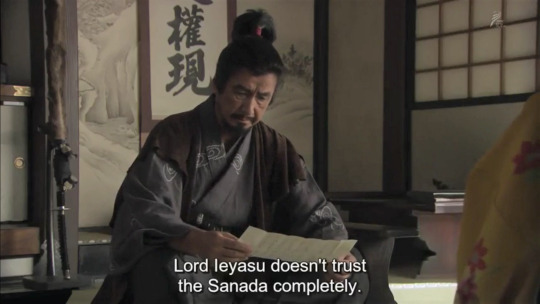
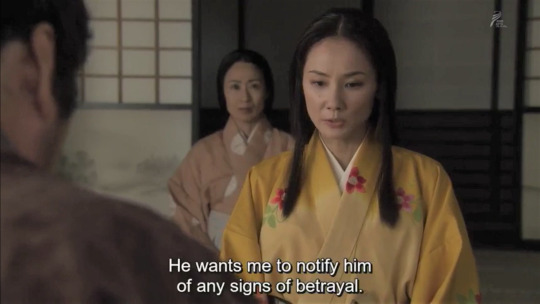


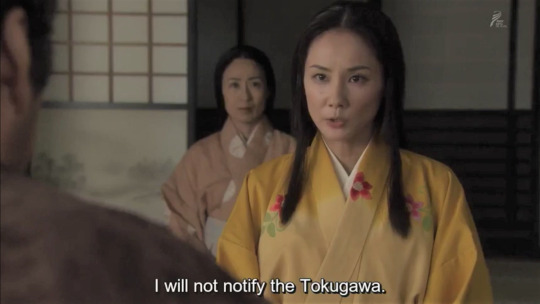

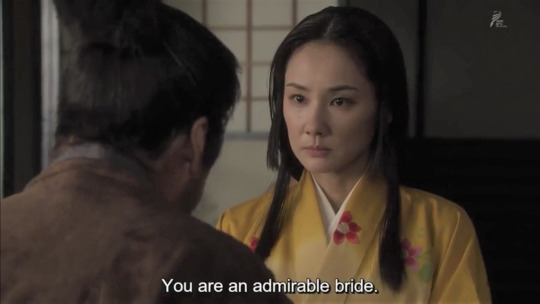
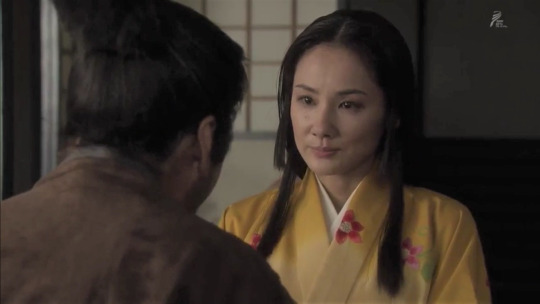
Sanada Maru Ep 34
Inahime aka Komatsuhime, the daughter of Tokugawa’s fearsome Samurai, Honda Tadakatsu, pledges her allegiance to her husband, Sanada Nobuyuki.
#sanada maru#inahime#komatsuhime#yo yoshida#you yoshida#honda tadakatsu#tokugawa ieyasu#taiga drama#japanese drama#sanada masayuki#masao kusakari#historical drama#japanese historical drama#asian drama#asian historical drama#sengoku jidai#samurai#sanada nobuyuki#yo oizumi
14 notes
·
View notes
Text
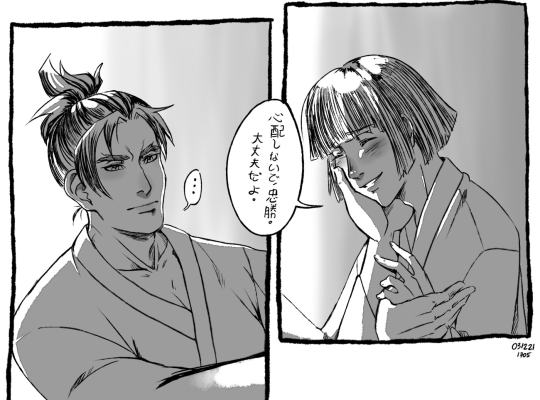
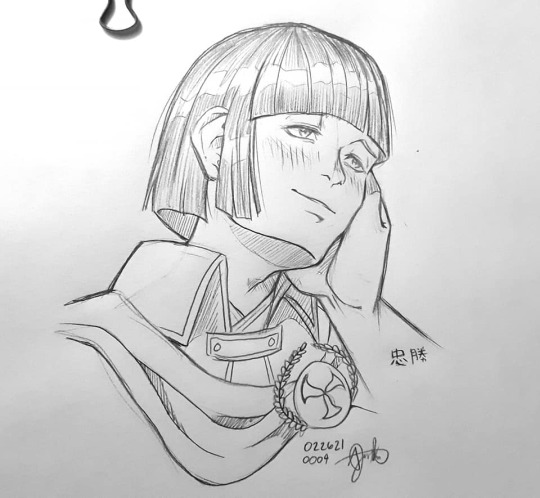

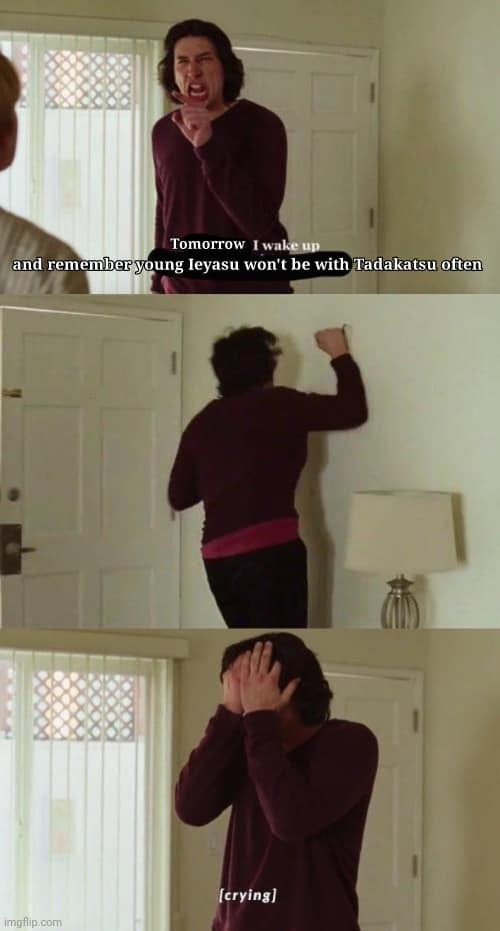
[SenMusou5 from latest to previous arts dump] Finally got to see SenMusou5 Tadakatsu!!
I know I've drawn two of the same theme(one was Tadakatsu wasn't revealed yet) but hhhhngg I want them strong and big hands ԅ(´﹃`ԅ)
I want them together more pleaseeee...!! Remembering if they chose Yasu's timeline with Imagawa, he'll be with Hanzou more, iirc hhhhh
10 notes
·
View notes
Photo

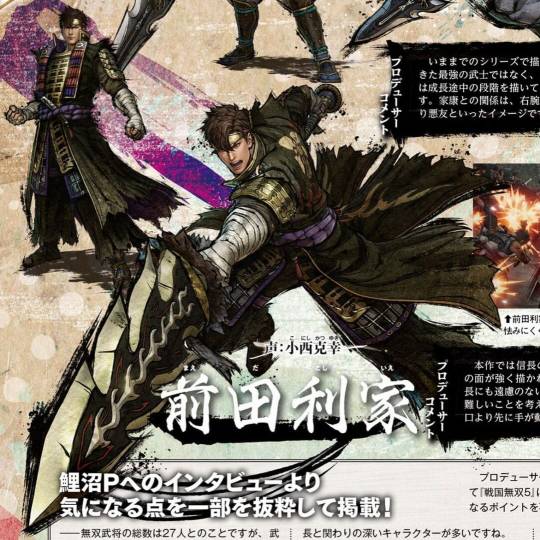
Tadakatsu and Toshiie confirmed for SW5!
Tadakatsu is voiced by Chikahiro Kobayashi, Toshiie keeps his old VA (Katsuyuki Konishi)
#samurai warriors#tadakatsu honda#toshiie maeda#THANK GOD they kept katsuyuki for toshiie he gives me so much life#i love him
8 notes
·
View notes
Text
Tadakatsu : let me see what you have!
Ieyasu : a knife!
Tadakatsu : NOOO!!!
#samurai warriors 5#samurai warriors#tadakatsu honda#ieyasu tokugawa#honda tadakatsu#tokugawa ieyasu
5 notes
·
View notes
Text
Drunk Tokugawa Retainers


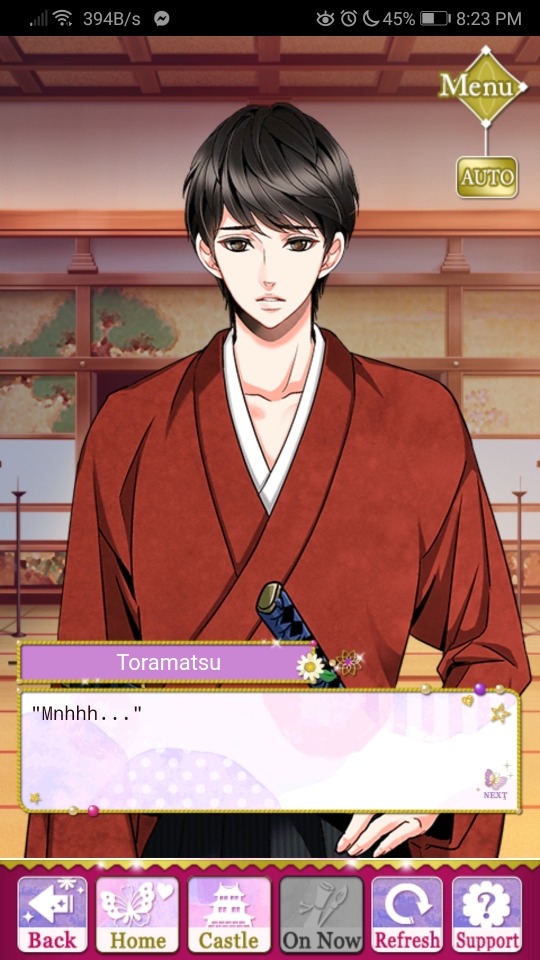



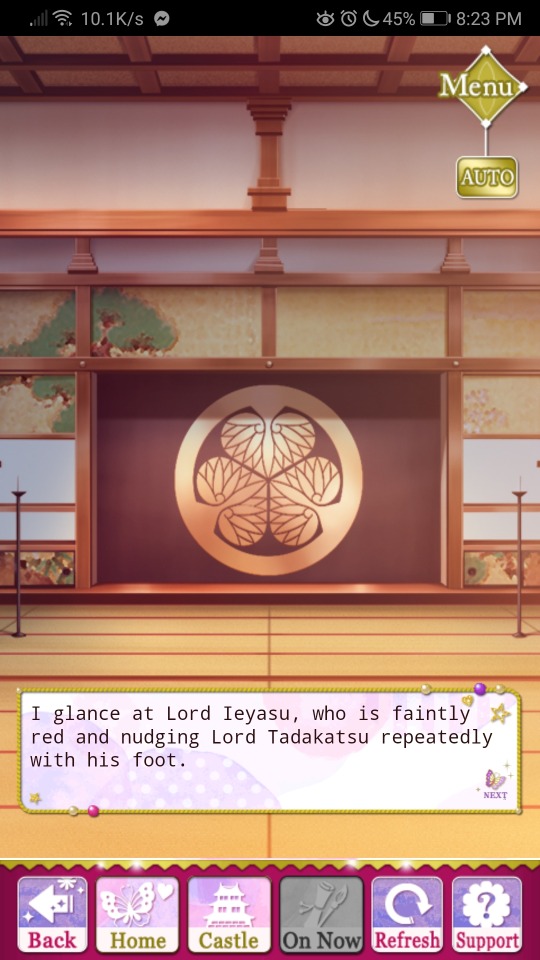
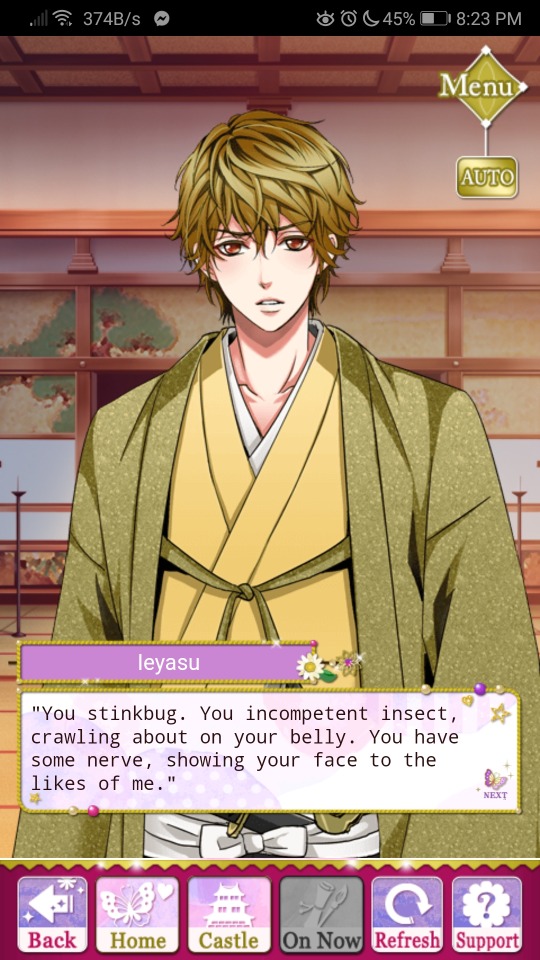

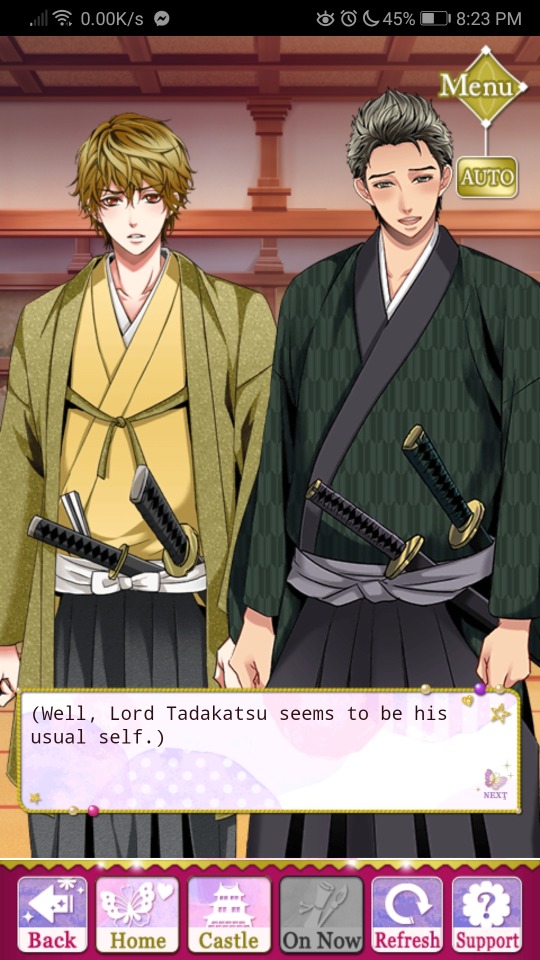
--
Love's Intoxication Euphoria Event
#samurai love ballad party#slbp#slbp event#slbp ieyasu tokugawa#slbp ieyasu#slbp sakai tadatsugu#slbp tadatsugu#slbp toramatsu#slbp ii toramatsu#slbp ii naomasa#slbp honda tadakatsu#slbp tadakatsu#slbp sakakibara yasumasa#slbp yasumasa sakakibara#slbp yasumasa
34 notes
·
View notes
Text



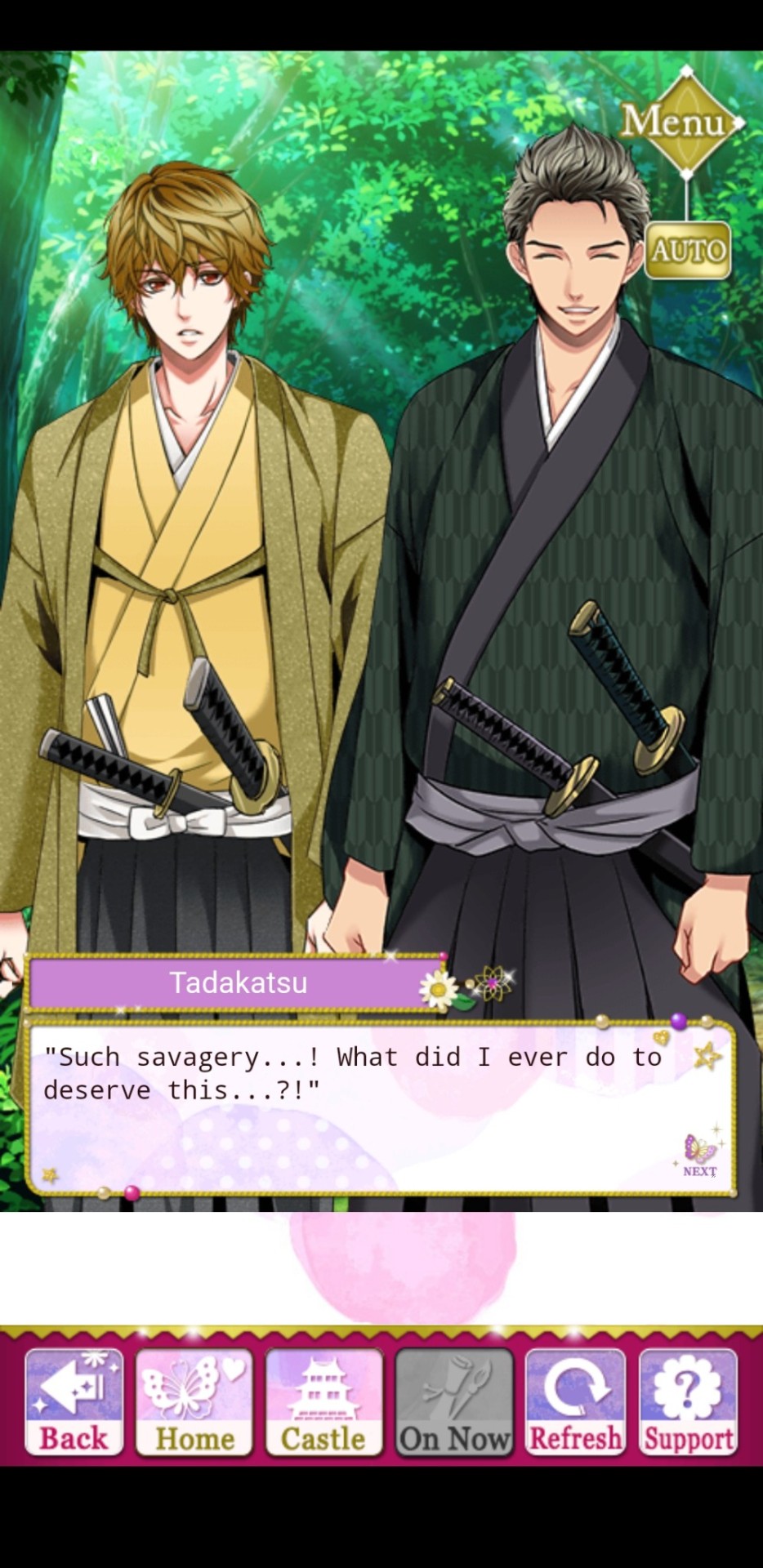


After going through Ieyasu's route, I'm already immune to such scene by Tadakatsu 😂
31 notes
·
View notes
Text
I plan to draw this soon, if I'm not loaded with other stuff in my queue (along w/ college work), but...
Montgomery Gator dressed as Tadakatsu Honda from Samurai Warriors 4 (or 2)
And yes, no one asked for it, lol.
7 notes
·
View notes
Photo
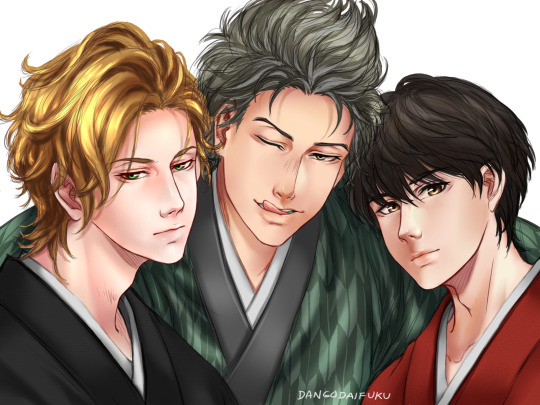
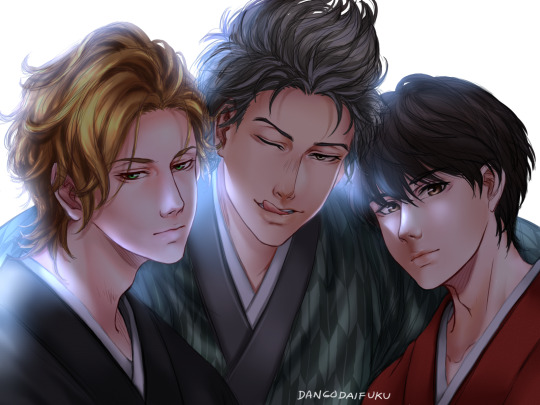
this has been a great practice with coloring faces in different angles
216 notes
·
View notes
Text

#tadakatsu pl e a s e#please leave your dck out of this#ooc#otome#out of context otome#slbp#samurai love ballad party#tenka touitsu koi no ran#slbp tadakatsu#slbp toramatsu#honda tadakatsu#tadakatsu#toramatsu
27 notes
·
View notes
Text

Me: Hm?
Remembers...

...

#i love you ieyasu#XD#poor bby#you tsun tsun baby#voltage inc#samurai love ballad party#slbp#slbp ieyasu#slbp tadakatsu#tokugawa ieyasu#honda tadakatsu#good mythical morning#gmm
26 notes
·
View notes